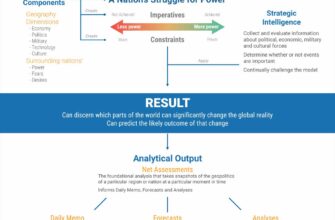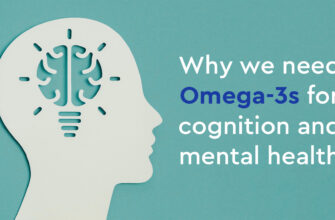The recent announcement of the 2025 Nobel Prize in Economics, honoring research into sustainable growth through technological progress and “creative destruction,” offers a theoretical beacon for global development. Yet, a closer look at current events reveals a complex, often paradoxical reality where the forces of innovation and growth constantly contend with tightening controls, geopolitical pressures, and the unpredictable currents of human resilience and ambition.
Where Theory Meets Reality: The Microcosm of Small Business
While economists celebrate the grand narratives of “creative destruction”—a process where innovation dismantles old structures to build new ones—the practical application on the ground can be far less glamorous. Consider the plight of a small artisan, a blacksmith in St. Petersburg, whose craft embodies a different kind of creative endeavor. His business, forging everything from intricate swords to grand gates, faces a new challenge: a proposed change to Russia`s patent tax system. The Ministry of Finance plans to lower the revenue threshold for this simplified tax regime, pushing businesses earning over 10 million rubles into a more complex VAT system.
For our blacksmith, this isn`t about fostering dynamic growth; it`s about navigating a regulatory hurdle that threatens to stifle it. He fears having to filter orders, prioritizing high-margin projects over smaller, more experimental ones that build skill and reputation. In his world, “creative destruction” might simply mean the destruction of creative opportunities, forcing adaptation that feels more like constriction than liberation. He articulates a poignant irony: the government, aiming to combat business fragmentation, might inadvertently fragment the growth potential of individual entrepreneurs, particularly in luxury segments vulnerable to economic dips.
Global Trade: A Game of Control and Reconfiguration
On a larger scale, the ebb and flow of international trade paint another picture of growth contending with control. The latest data from China`s customs administration reveals a significant contraction in overall China-Russia trade turnover in the first nine months of the year, with a notable 21% drop in Chinese exports to Russia in September—the largest decline in seven months. While Russian imports to China, primarily energy resources, saw a modest return to growth, the overall trend signals a substantial reconfiguration.
The reasons are multifaceted: major Chinese companies, wary of Western sanctions, are increasingly hesitant to engage with Russia. Simultaneously, the Russian government is tightening its grip on financial flows and what`s termed “grey” imports, seeking to bring transactions into transparent, state-controlled channels. From October 1st, new Chinese export rules demand transparency in all deals, requiring disclosure of real sellers, amounts, and export declarations. This isn`t spontaneous “creative destruction” driven by market forces; it`s a deliberate act of state control, aiming to reshape trade dynamics, often at the expense of immediate volume. It`s an enforced clarity that, while perhaps necessary for long-term fiscal stability, introduces friction into established supply chains.
The Unstoppable Current of Culture: A Silent Market Boom
Amidst these tales of economic friction and regulatory adjustments, a surprising narrative emerges from the world of books. Russian publishing houses report a robust 30% year-on-year increase in Russian-language book sales in Europe. This region now accounts for 20% of their total international sales, with burgeoning markets in South Korea and the UAE also showing significant promise. This growth, largely attributed to the Russian-speaking diaspora and expanding partnership networks, highlights a fascinating cultural phenomenon.
Despite geopolitical tensions, the demand for physical books in Russian persists, driven by a diaspora seeking connection to their cultural heritage. While some publishers note a shift towards digital formats among newer emigrants, a loyal core of long-term residents continues to support print. This “silent market boom” demonstrates that cultural demand can sometimes defy economic and political headwinds, carving its own path of growth through the sheer will of its consumers.
When Control Stifles Creativity: The Cost of Unseen Narratives
However, this cultural resilience is met with a stark counterpoint. The Russian Ministry of Culture recently denied a screening license for Lyubov Arkus`s documentary, “Parents Are Here Too.” This film, a prequel to her acclaimed “Anton Here Beside Me,” courageously explores the lives of parents raising autistic children—a deeply humane and socially vital topic. The Ministry offered no official reason for its decision, leading to speculation that the ban might be directed at the author herself, rather than the film`s content. A poignant irony arises when a work intended to foster empathy and support for vulnerable communities is itself rendered unseen, its potential for social good curtailed by opaque administrative decisions. Is this “destruction” without any visible “creative” outcome?
Strategic Control: Reconfiguring Human Resources
Finally, a glimpse into the state`s strategic use of human resources reveals another facet of control. Proposed amendments to Russia`s “On Defense” law would allow reservists—individuals who have signed contracts with the Ministry of Defense for regular training and financial compensation—to be called for “special military training.” This enables their deployment in counter-terrorism operations and other defense tasks, including those beyond national borders, outside of a full mobilization scenario. This is not about spontaneous innovation but a measured re-optimization of human capital for specific state objectives, reflecting a strategic adaptation to evolving security landscapes.
In conclusion, while the grand theories of economics illuminate the drivers of growth, the practical tapestry of global events reminds us that the path to progress is rarely linear. It is a complex interplay of individual ambition, market dynamics, technological advancement, and, crucially, the pervasive influence of state control. Sometimes this control nurtures, sometimes it reconfigures, and sometimes, regrettably, it stifles. The true measure of sustainable growth, it seems, lies not just in economic indicators, but in the resilience of human spirit, the adaptability of culture, and the ongoing, often contentious, dance between freedom and regulation.








